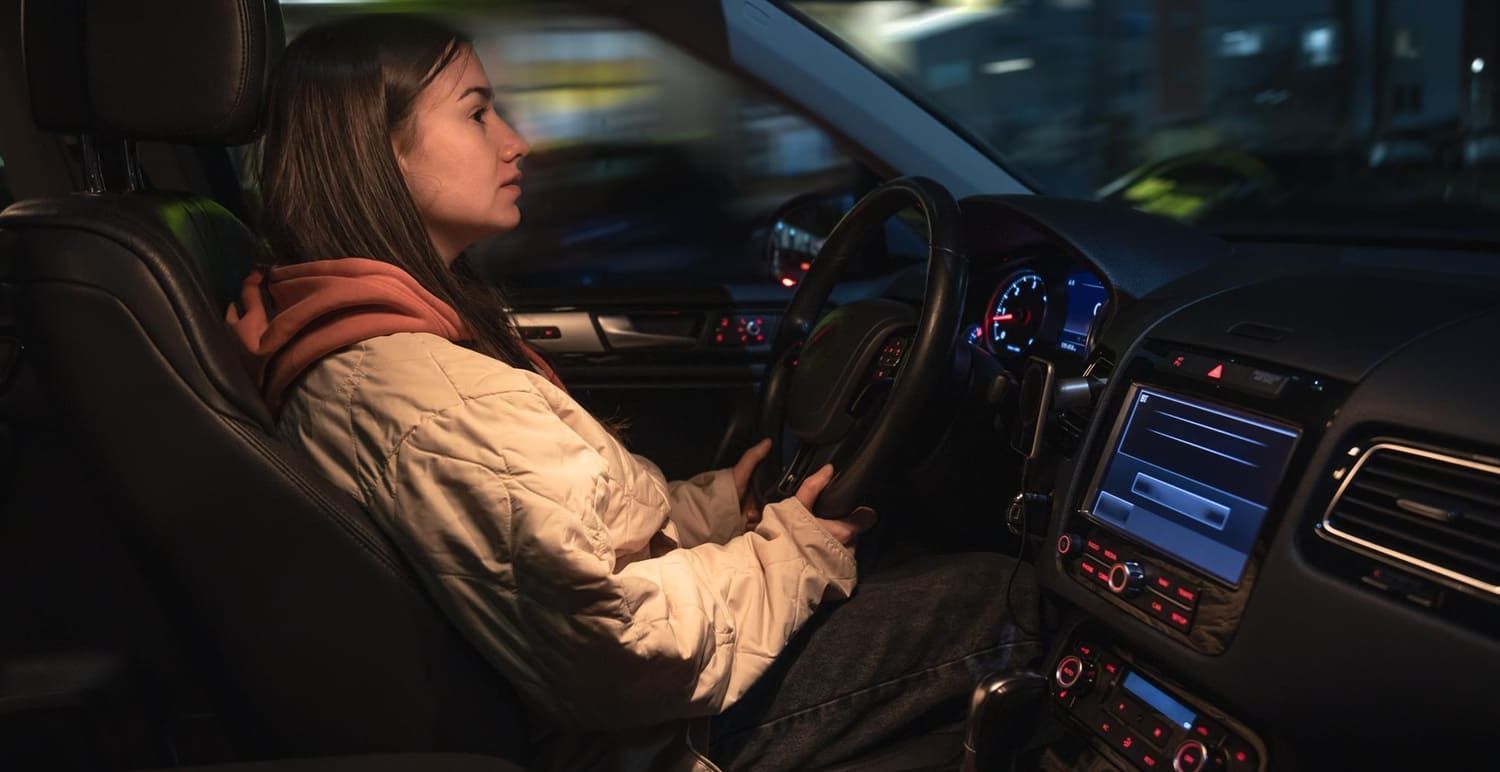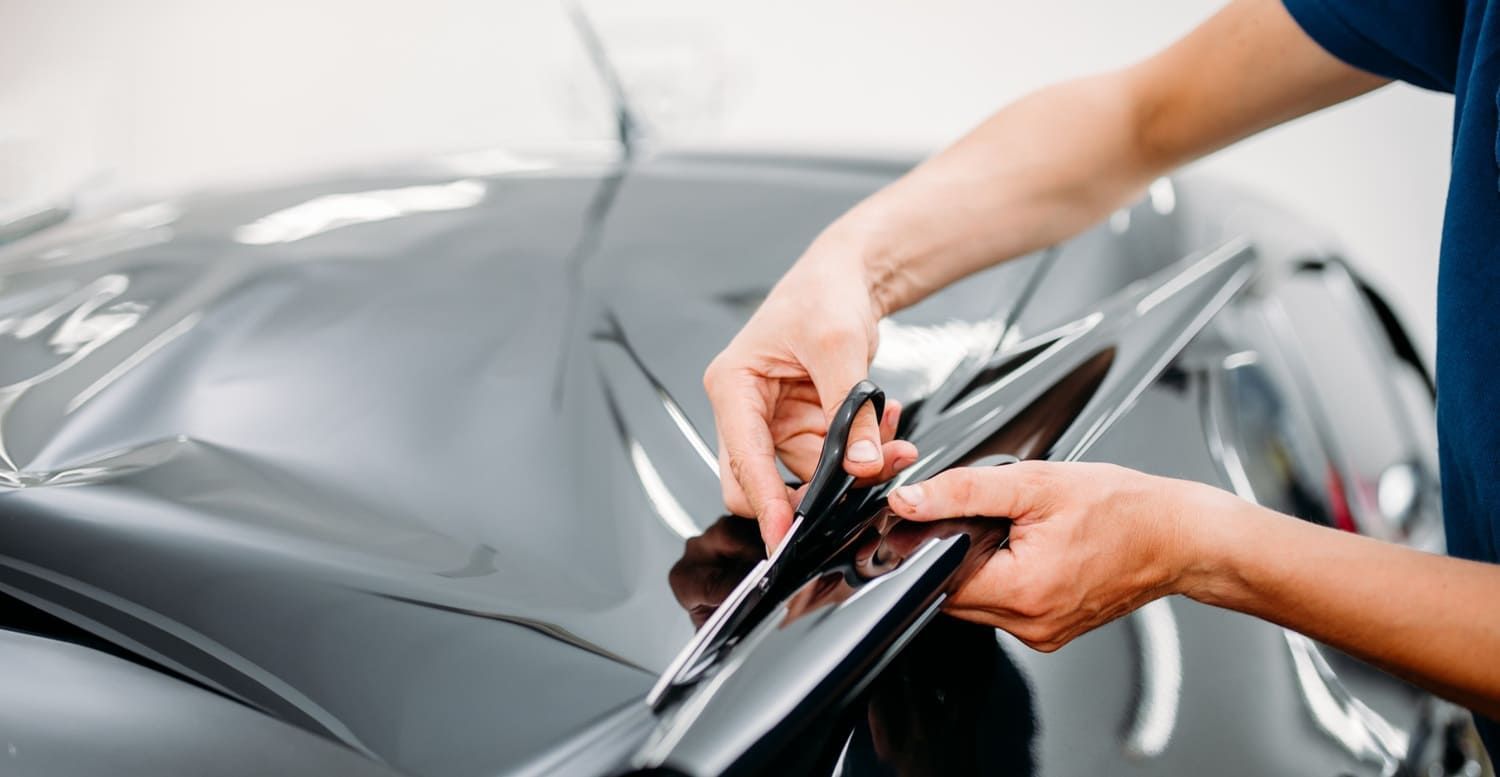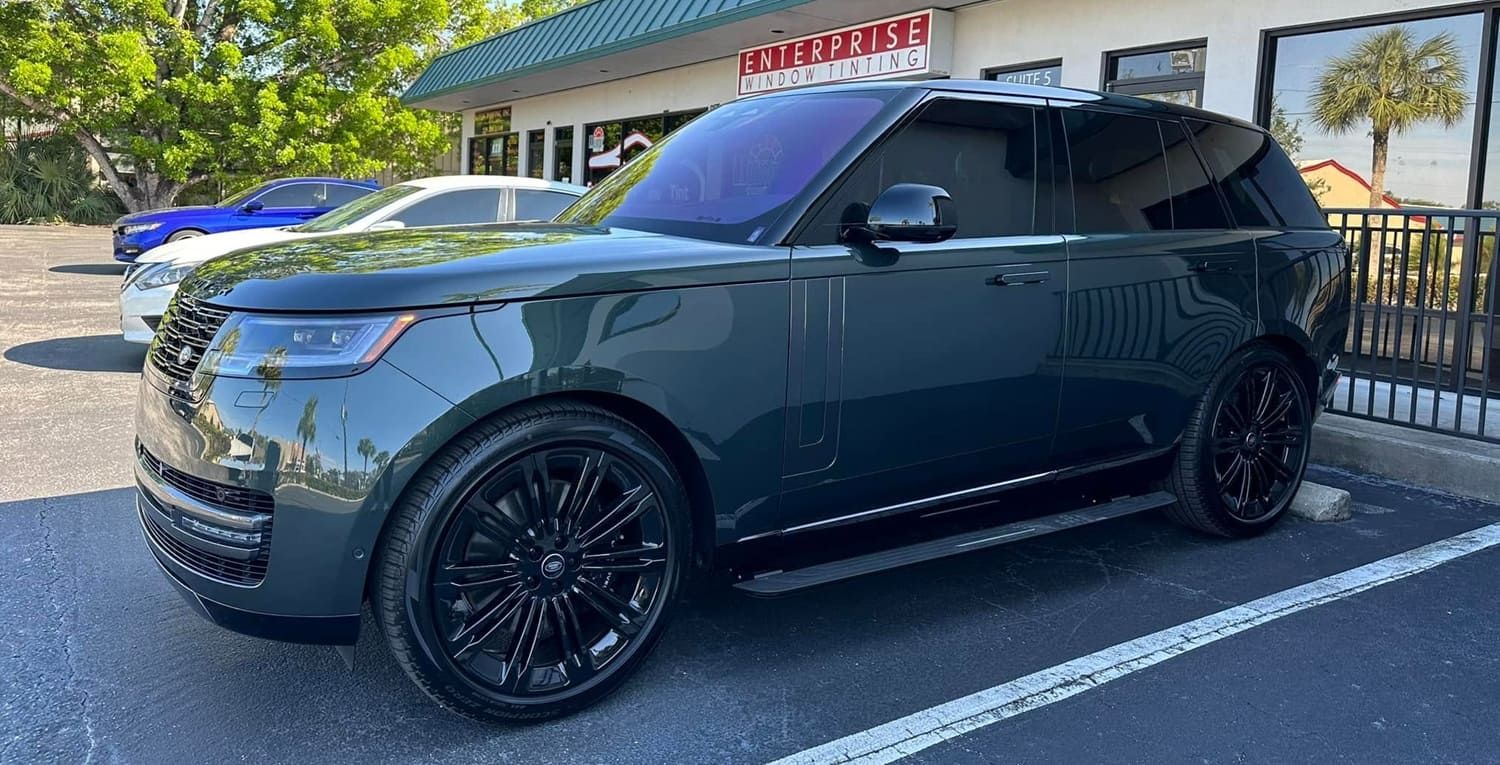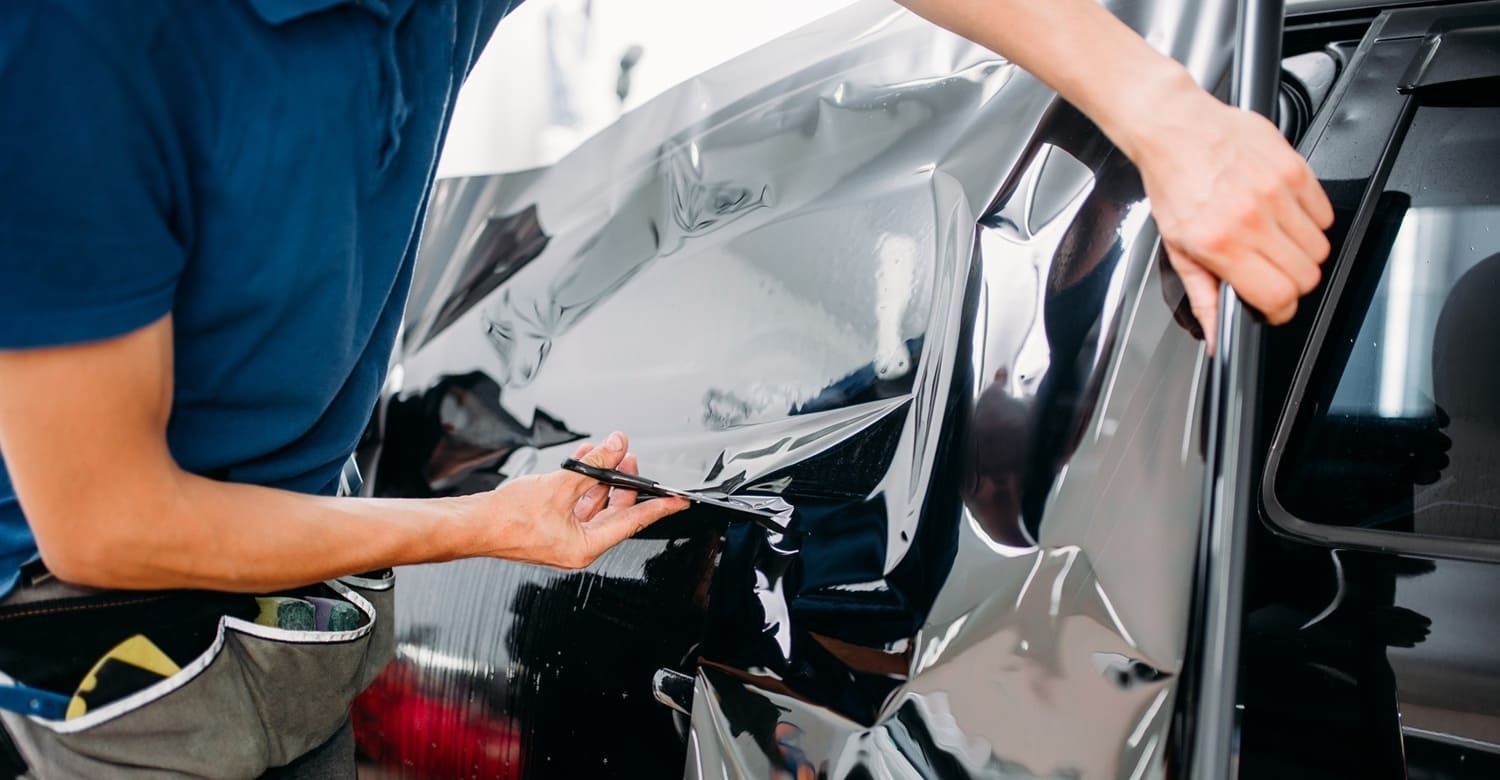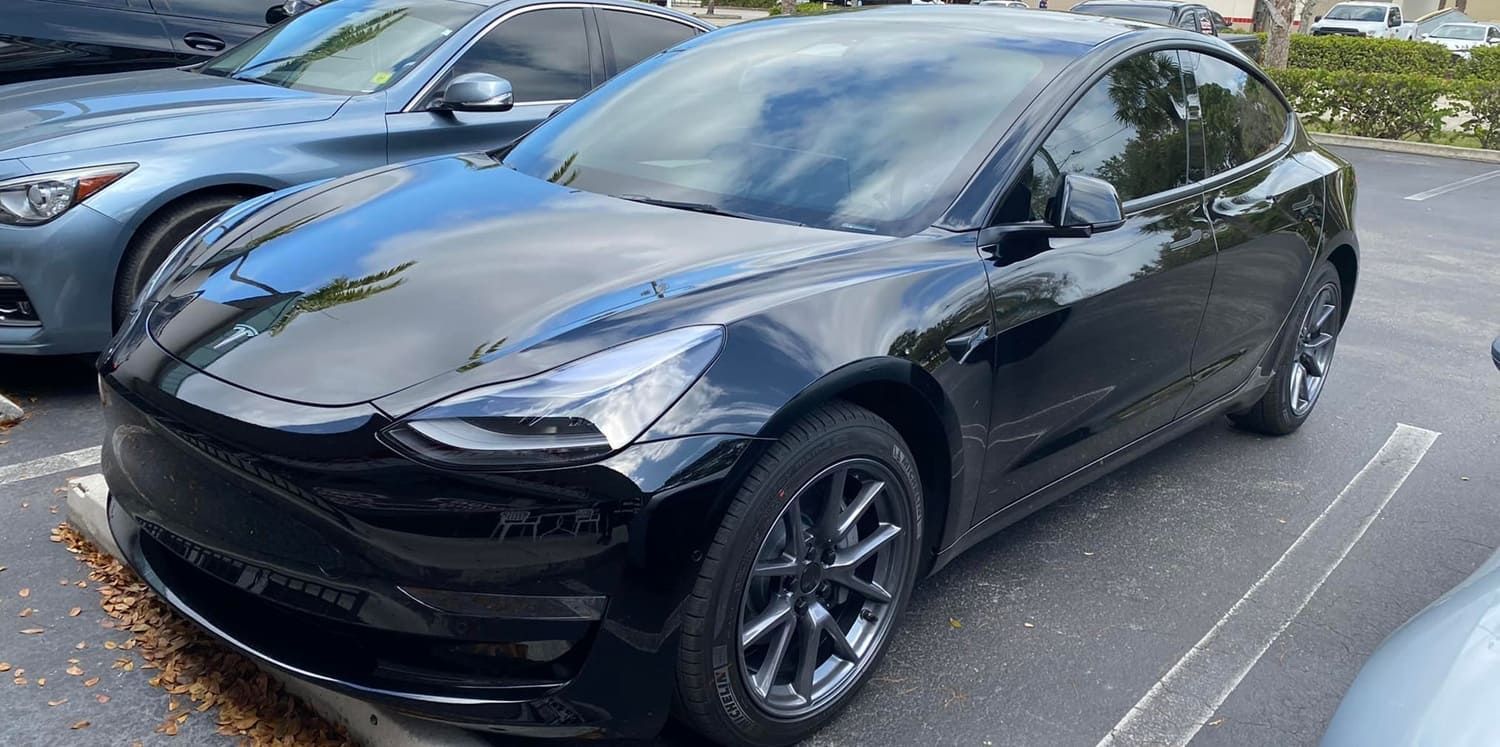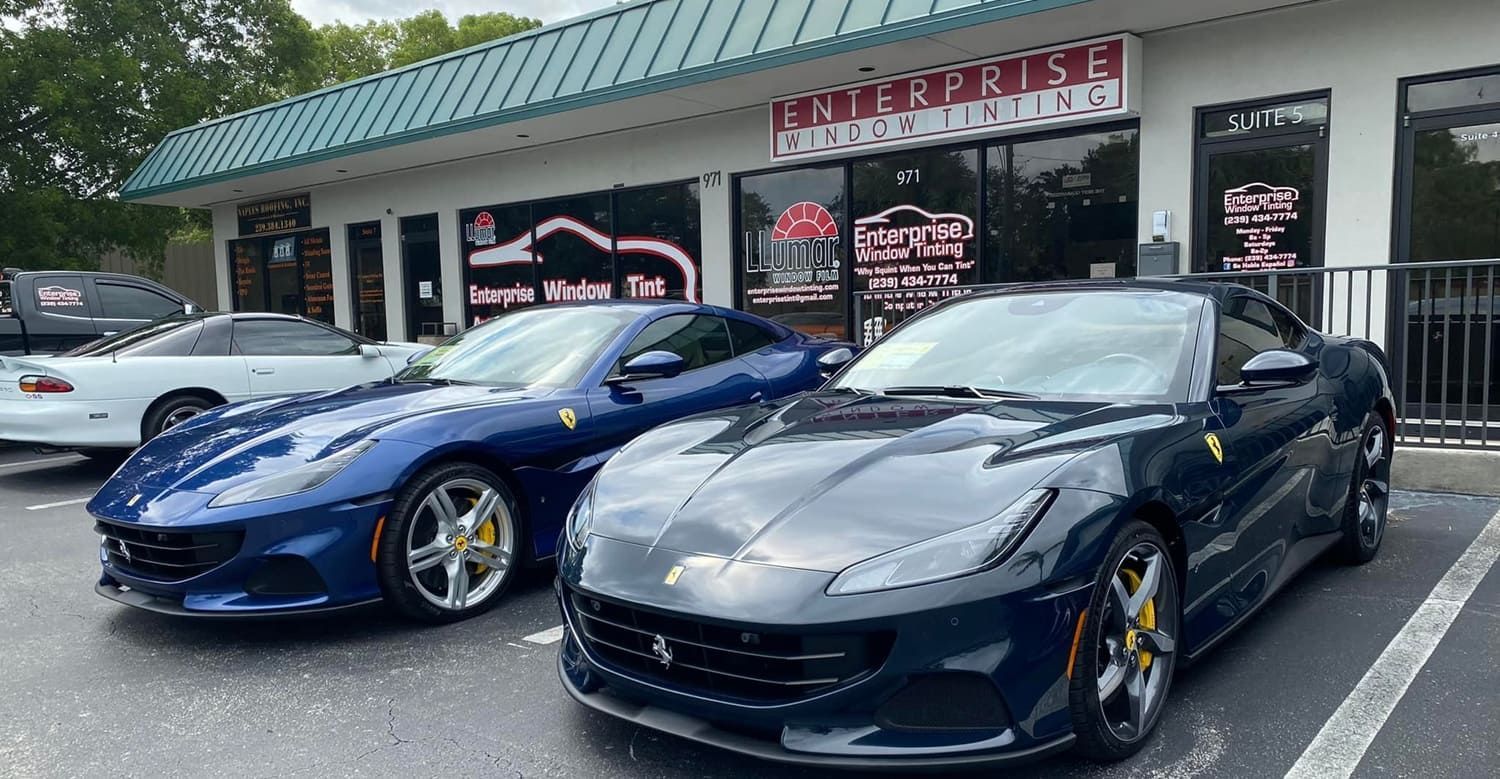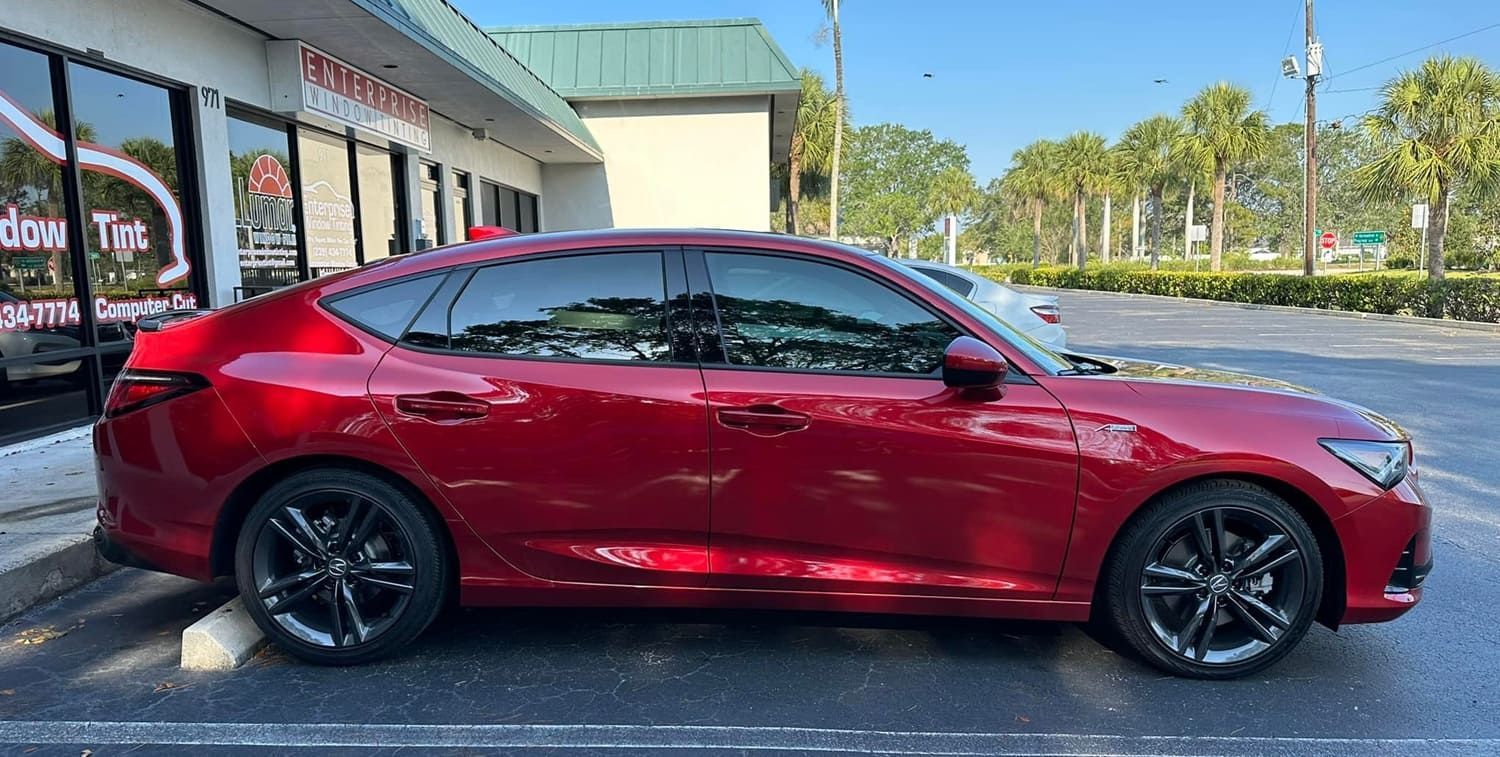Does Car Tinting Affect Nighttime Visibility?
Understanding Car Window Tinting
Before diving into the impact of tinting on nighttime visibility, it's essential to understand what car window tinting involves. Car window tinting is the process of applying a thin laminate film to the glass surfaces of a vehicle. This film can vary in shade and material, offering different levels of light filtration and UV protection. The selection of tint involves not just aesthetic preferences but also functional considerations like heat rejection and visibility.
Window tinting has evolved significantly with advances in technology, offering more options than ever before. It's not just about a darker shade; it's about finding the right balance that serves your needs while adhering to legal standards. The decision to tint your windows should factor in both immediate benefits and long-term implications, including impact on resale value, compliance with state laws, and potential effects on nighttime driving.
Types of Car Window Tints
There are several types of car window tints available in the market, each with its unique characteristics:
- Dyed Window Tint: This type uses a dye between the adhesive and the outer protective layer. It's the most affordable option and offers a non-reflective finish. However, dyed tints can fade over time and may not provide the same level of heat rejection as other types.
- Metalized Window Tint: Contains metallic particles that reflect heat and block UV rays. It strengthens the window but may interfere with electronic devices. This type of tint is known for its durability and scratch resistance, making it a long-lasting option.
- Carbon Window Tint: Offers a matte finish and excellent UV protection. It doesn't fade over time and won't interfere with electronics. Carbon tints are known for their sleek appearance and are often chosen for their superior thermal insulation properties.
- Ceramic Window Tint: Composed of ceramic particles, it provides superior UV protection and heat reduction without compromising visibility. Ceramic tints are considered the top-tier option for those seeking maximum performance and minimal interference with devices.
- Llumar Car Window Tinting: Known for its high quality and durability, Llumar offers various tint types that cater to different needs. Llumar tints are often praised for their advanced technology and ability to provide a clear view while blocking a significant amount of heat.
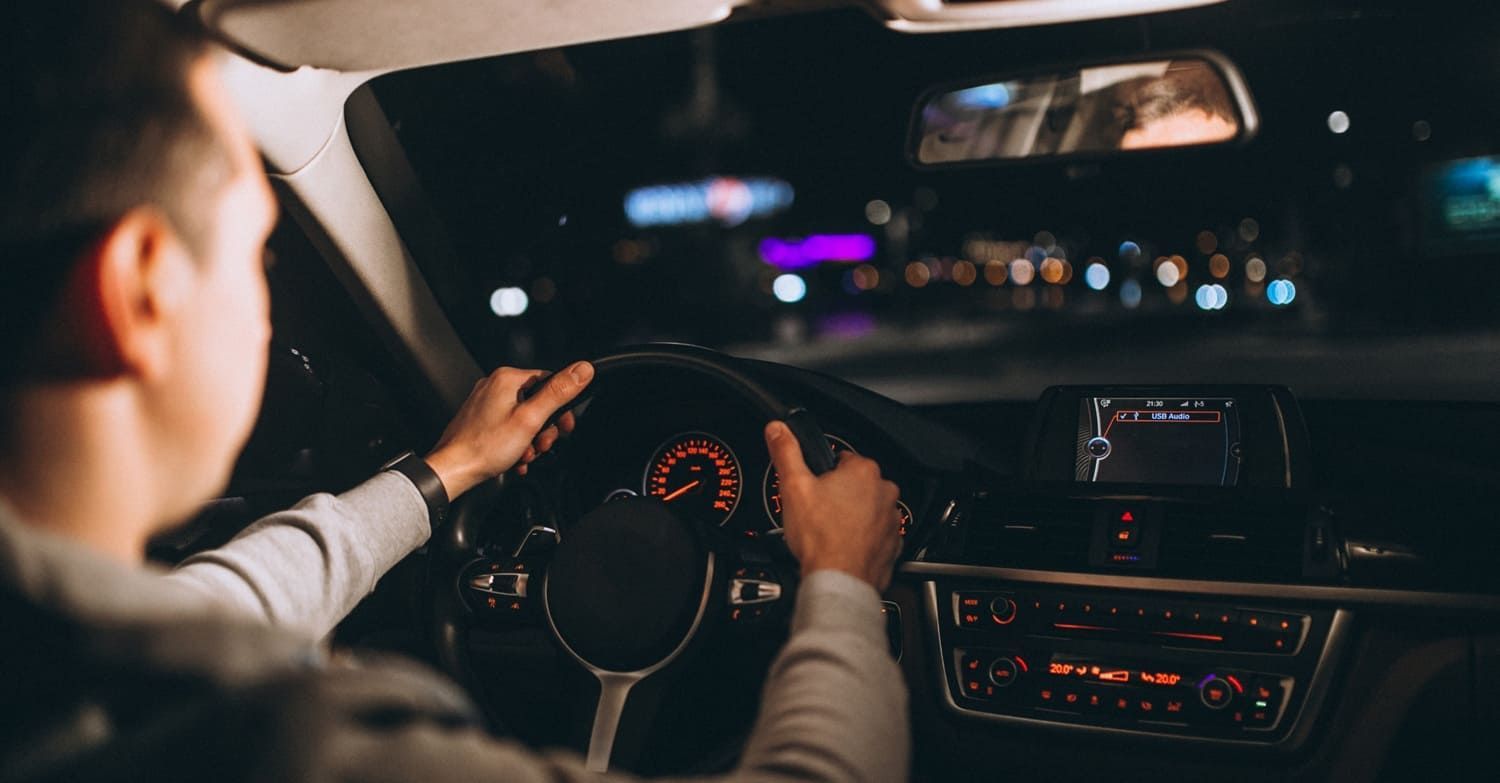
The Impact of Tinting on Nighttime Visibility
How Tint Darkness Affects Visibility
The darkness of a tint is measured by its Visible Light Transmission (VLT) percentage. A lower VLT percentage means darker tint, allowing less light to pass through. While darker tints can reduce glare and heat during the day, they might impair visibility at night. It's crucial to strike a balance between privacy, protection, and visibility. Ensuring your tint does not fall below the legal VLT limit in your area is vital for both safety and compliance.
At night, the reduced light transmission can make it more challenging to see obstacles, pedestrians, or other vehicles. This is particularly important in poorly lit areas or on roads without adequate street lighting. Understanding how different VLT percentages affect your visibility can help you choose a tint that fits your lifestyle without compromising your safety.
State Regulations and Safety Concerns
Each state has regulations regarding the legal limit for tint darkness on vehicles. These laws are in place to ensure driver safety by maintaining adequate visibility. It's important to check the specific laws in your state before choosing a tint level. Using a tint that is too dark might not only be unsafe but can also lead to fines or penalties. Legal compliance is a crucial aspect of window tinting that should not be overlooked.
Different states have varying levels of enforcement, and understanding these differences can save you from potential legal troubles. Additionally, awareness of the regulations can help you explain your tint choices to authorities if questioned. It also gives you the assurance that your vehicle is equipped for safe and legal driving under all conditions.
Factors Influencing Nighttime Visibility
Several factors can affect how tinting impacts your ability to see at night:
- Headlight Quality: Bright and well-aligned headlights can mitigate some of the visibility issues caused by darker tints. Upgrading to high-intensity discharge (HID) or LED headlights can provide better illumination, compensating for the reduced light transmission of darker tints.
- Street Lighting: Well-lit roads can help improve visibility when driving with tinted windows at night. Familiarity with your usual routes can inform your decision on how dark your tint should be, ensuring it aligns with your driving environment.
- Weather Conditions: Rain, fog, or snow can further reduce visibility, making it more challenging to drive with dark tints. Considering the typical weather patterns in your area will help you choose a tint that offers the right balance of daytime benefits and nighttime visibility.
Choosing the Right Tint for Nighttime Visibility
Assessing Your Needs
When selecting a car window tint, consider your driving habits and environment. If you frequently drive at night or in poorly lit areas, a lighter tint might be more suitable. However, if privacy and sun protection are your primary concerns, you might opt for a slightly darker tint. Understanding your priorities—be it aesthetics, functionality, or a combination—will guide your choice in selecting the most appropriate window tint.
Consider the type of vehicle you have and how it influences your tint choice. Larger vehicles, like SUVs, may require a different tint approach compared to compact cars due to differences in window size and angles. Evaluate how your vehicle's design interacts with the tint to ensure optimal performance.
Balancing Aesthetics and Functionality
Aesthetics play a significant role in tint selection, but functionality should not be compromised. While a sleek, dark tint might look appealing, it's crucial to ensure that it doesn't hinder your ability to drive safely at night. A balance between style and practicality is essential for a satisfying tint experience.
Consider experimenting with different shades and finishes to see what works best for your vehicle's look and your personal taste. Remember that what may look good on one car might not suit another due to differences in color and style. Always test samples before committing to a specific tint.
Seeking Professional Advice
Consulting with a professional window tint installer can provide valuable insights into what type of tint would best suit your needs. Professionals can guide you through the options and help you find a balance between visibility and other benefits of tinting. Their expertise can be invaluable in navigating the complexities of tint selection and application.
Professional installers can also offer warranties and guarantees on their work, providing peace of mind and assurance of quality. They can assist in understanding the technical aspects of tinting, such as infrared rejection and UV filtering, ensuring you make an informed decision. With their help, you can achieve the desired results without compromising on safety or legality.
Benefits of Car Window Tinting Beyond Visibility
While visibility is a key consideration, car window tinting offers several other benefits:
- UV Protection: Tints block harmful UV rays, protecting your skin and the car's interior. This can prevent fading and cracking of upholstery and dashboards, extending the lifespan of your car's interior.
- Heat Reduction: Tinted windows can significantly reduce the heat inside the car, making it more comfortable during hot weather. This can also lead to reduced reliance on air conditioning, potentially improving fuel efficiency.
- Privacy and Security: Tints provide privacy by obscuring the view into the car, which can also deter potential thieves. The added privacy can make your vehicle feel more secure and protect valuables from prying eyes.
- Glare Reduction: Tinting reduces glare from the sun and headlights, improving driving comfort and safety. This is particularly beneficial during sunrise or sunset when the sun is low on the horizon and can cause blinding glare.
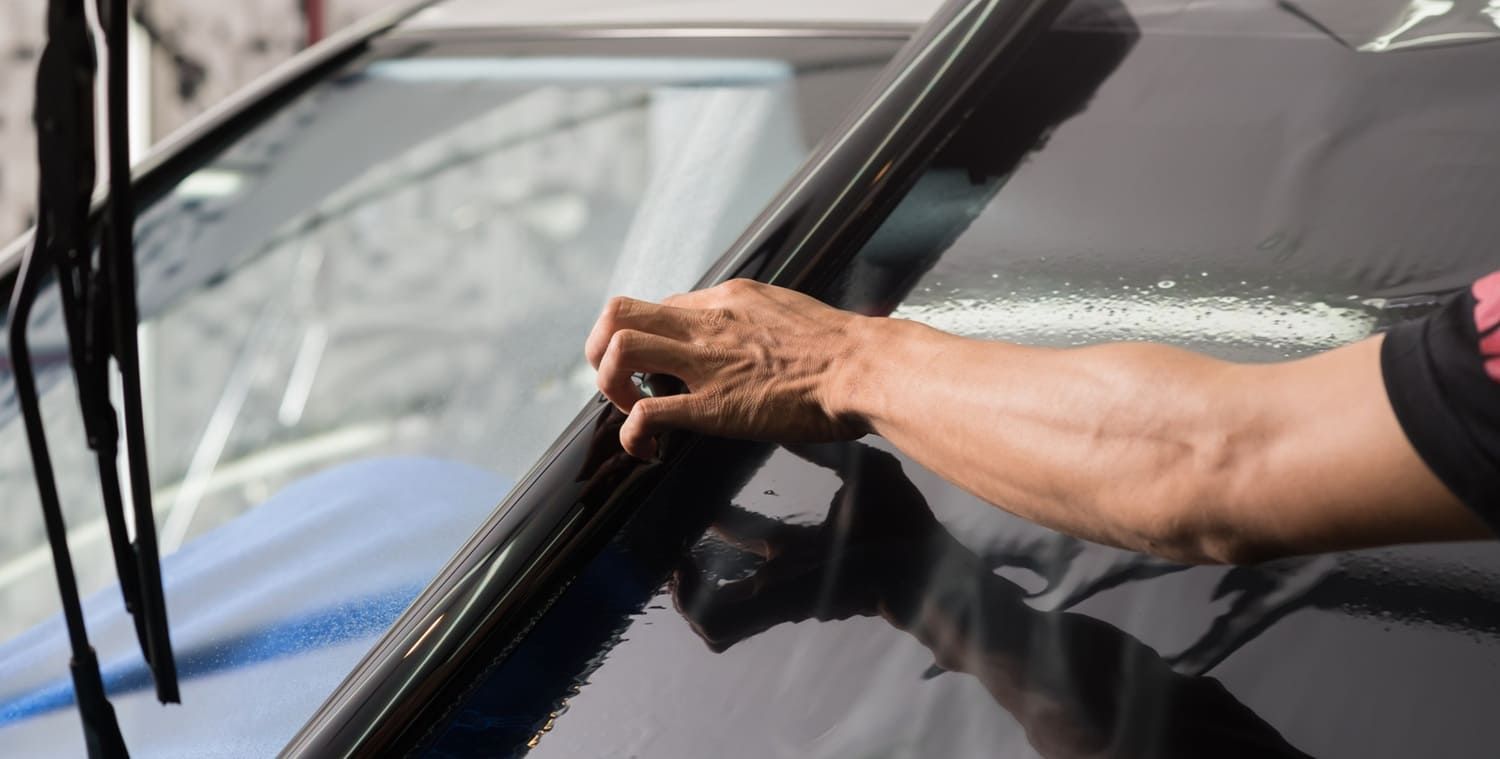
Conclusion
At ENTERPRISE WINDOW TINTING, your trusted LLumar dealer serving Naples, FL, we know that car window tinting offers a wide range of benefits—from UV protection and heat reduction to enhanced privacy and style. However, one important factor that’s often overlooked is its effect on nighttime visibility.
By understanding the various LLumar tint options and their light transmission levels, you can make a well-informed decision that balances aesthetics, safety, and functionality. Choosing the right film ensures you stay compliant with Florida tint laws while enjoying a comfortable and safe driving experience, day or night.
Contact ENTERPRISE WINDOW TINTING today for a free estimate, and let our experts help you select the perfect window tint to enhance your vehicle’s look and performance—without compromising your safety on the road.
FAQs About Car Tinting and Nighttime Visibility
Does window tinting reduce visibility at night?
Yes, especially with darker tint shades like 5% or 15%. These can make it more difficult to see in low-light conditions or poorly lit areas.
Which tint percentages are safest for night driving?
Tints between 35% and 50% VLT (Visible Light Transmission) are typically recommended for maintaining good nighttime visibility while still reducing glare and heat.
Why does darker tint make night driving harder?
Darker tints allow less light into the vehicle, which can affect your ability to see road signs, pedestrians, or obstacles in poorly lit environments.
Is ceramic tint better for nighttime driving?
Yes. Ceramic films offer high heat and UV rejection without needing to be dark, making them ideal for preserving visibility at night.
Can I tint my windshield for night glare without affecting visibility?
In most states, only a visor strip at the top of the windshield is allowed. However, clear ceramic films can reduce glare without compromising night vision.
Does tint on rear windows affect backing up at night?
It can, especially with very dark tints or in cars without backup cameras. Lighter tints or using factory privacy glass with film can help balance safety and performance.
Is it legal to use dark tint if it impacts nighttime visibility?
State laws regulate minimum VLT levels, partly to ensure safe visibility at night. Always check your local tint laws before choosing a film.
Can poor-quality tint make nighttime visibility worse?
Yes. Low-grade or unevenly applied tint may create haze, distortion, or glare from headlights, making night driving more difficult.
Will I get used to night driving with tint over time?
Many drivers adjust to mild tint over time, but very dark films may always reduce night vision, especially for those with sensitive eyesight.
How can I improve nighttime visibility with tint installed?
Choose a high-performance film with higher VLT, keep windows clean inside and out, and use anti-reflective windshield coatings if needed.
Are there tints specifically made for better visibility at night?
Yes. Some brands offer high-clarity ceramic or crystalline films that maintain visibility while still offering heat and UV protection.
Can tinted windows increase headlight glare at night?
They may reduce incoming glare, but improper film installation or poor film quality can cause light scatter or reflections, worsening glare instead of helping.
Should older drivers avoid darker window tints?
Yes. As eyesight declines with age, lighter or non-reflective tints are often better for ensuring safe nighttime driving.
Will front side window tint affect seeing pedestrians or cyclists at night?
It can if the film is too dark. Choose legal, light ceramic films to maintain clear side visibility in low-light conditions.
Does tinting affect night visibility more in rural areas?
Yes. In rural or unlit roads, darker tints can significantly limit visibility compared to city driving where street lighting is stronger.
Can I still drive safely at night with tinted windows?
Yes, as long as the tint is within legal limits and you use high-quality, professionally installed film that allows enough light through.
What’s the best tint film type for night and day balance?
Ceramic or spectrally selective films provide the best mix of heat rejection, UV protection, and clear nighttime visibility.
Does factory privacy glass have the same effect at night as tint?
Factory privacy glass is darker, but pairing it with a clear ceramic film can enhance heat rejection without worsening nighttime visibility.
Can rear window tint affect rearview mirror visibility at night?
Yes. Heavily tinted rear windows can reduce mirror clarity. Using rearview mirrors with auto-dimming or night vision tech can help compensate.
Is there a legal limit to how dark I can tint my car windows at night?
Yes. State tint laws regulate VLT for front, rear, and side windows to ensure safe driving both day and night. Always check regulations before choosing a shade.

